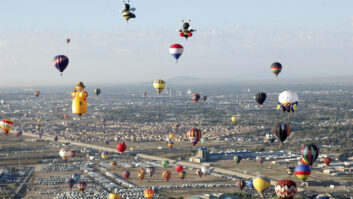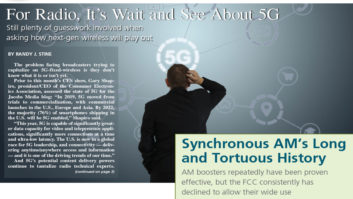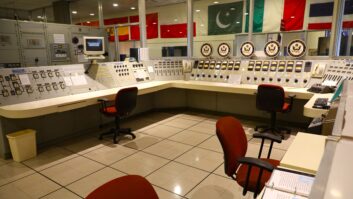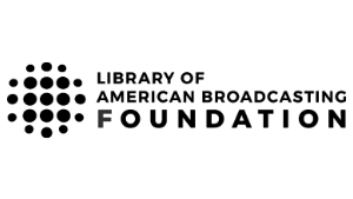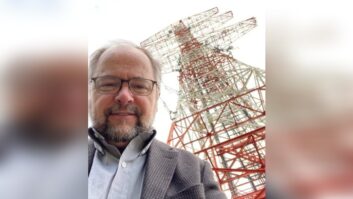With AM improvement on the radars of broadcasters and the FCC, there has been renewed talk in recent years about the subject of AM “boosters,” the carrier frequency synchronization of multiple transmitters. The commission opened a comment period on AM boosters in 2017.
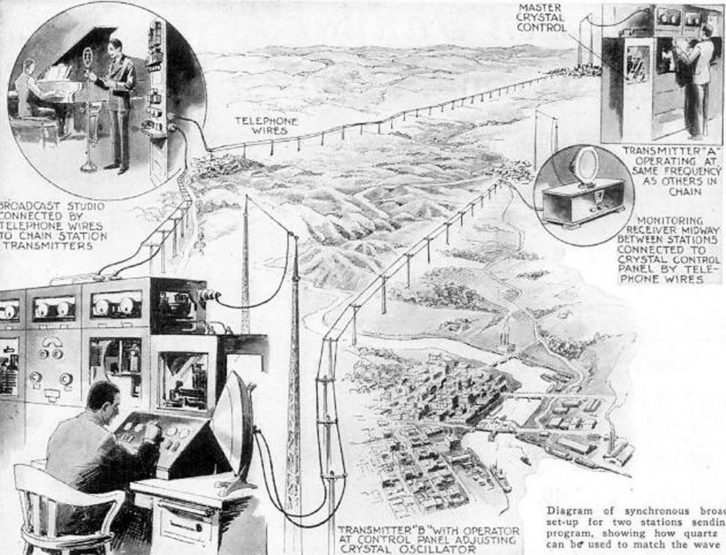
It wasn’t the first time the FCC has explored this topic and failed to act on it. In fact, AM boosters have been proposed and tested dozens of times since the early days of radio. But even though the technology has repeatedly been proven effective, the commission consistently has declined to allow the operation of AM boosters on anything more than an experimental basis, for a variety of reasons.
Let’s take a moment to look back at the history of this beleaguered technology.
BOSTON REPEATER
In 1930, crystal control of transmitter frequencies was still an emerging technology, and the allowable frequency tolerance of a broadcast transmitter was +/- 500 Hz. Two stations operating on the same channel, even if widely geographically separated, could generate a heterodyne beat note of up to 1 kHz, a disconcerting annoyance to listeners.
Consequently, only a few stations were allowed to operate nationwide evenings on any one channel at the same time. Further, there were 40 clear-channel stations, each one having exclusive nationwide use of its frequency. As most of these clear-channel stations were network affiliates, many channels were wastefully duplicating the same programs.
In 1929, the respected radio engineer Frederick Terman proposed that, if all stations of the two networks (NBC and CBS) could synchronize their carrier frequencies within +/- 0.1 Hz to eliminate the heterodyne beat notes, they could all coexist on a single channel per network, freeing up dozens of channels for new stations.
Synchronization was first proved successful by the Westinghouse station WBZ in Springfield, Mass. Broadcasting from the roof of the Westinghouse factory, WBZ failed to cover Boston, so WBZA was opened as a Boston repeater. The two stations were synchronized on the same frequency beginning in 1926, using a tuning fork as a frequency reference.
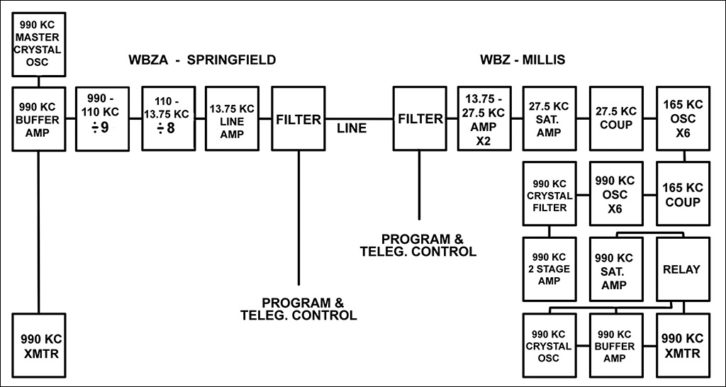
Synchronization improved coverage in some areas, but also created interference zones with distortion and fading wherever the two signals were roughly equal in strength. After a year of experimentation, a successful technology was found: a master crystal oscillator in Springfield set the frequency for both transmitters. Its output was divided down to the audio range and sent by phone line to Boston, where it was multiplied back upward to drive the WBZ transmitter.
Meanwhile, pressure was building on the networks to test synchronization, and in October, 1930, the Federal Radio Commission administered an overnight test on a single clear-channel frequency, 660 kHz. Three NBC 50 kW stations, WEAF, KDKA and WGY, broadcast the same program on the channel. It worked remarkably well. Long-distance skywave reception was greatly improved; fading was virtually eliminated. Whenever one station’s signal faded, the others continued to provide clear reception.
Although NBC couldn’t deny that the technology had worked well, it resisted. Its true reasons were not technical, but economic. It had become common practice to feed different network programs to different parts of the country to serve advertisers who only wanted regional coverage. With synchronization, such “split network” operation would no longer be possible. Also, NBC feared that giving up its clear channels would lead to the creation of competitive networks using the same system.
Nonetheless, NBC encouraged synchronization in the cases of several affiliate stations that shared time on clear-channel frequencies, thus allowing them to operate full time.
In 1931, NBC synchronized its New York flagship station WEAF with WTIC in Hartford. However, the stations were too close together, causing objectionable interference. Attempts at synchronizing WJZ in New York with WBAL in Baltimore had better results, and that operation continued until 1937.
Another successful synchronization experiment involved WHO in Des Moines and WOC in Davenport, Iowa, starting in 1930. B. J. Palmer owned both stations and operated them on 1000 kHz under the dual call sign WHO-WOC. Synchronization was accomplished using a new Bell Labs technology: An operator at a monitoring station halfway between the two transmitters monitored the beat note between the stations and remotely adjusted WOC’s crystal oscillator every 10 minutes.
Although the system was successful, the operation ended in 1933 when WHO raised its power to 50 kW.
A similar technology developed by Western Electric synchronized WBBM in Chicago with KFAB in Lincoln, Neb. The two CBS stations had been time-sharing their 770 kHz frequency since 1928. In January 1934, they synchronized their carriers, broadcasting separate programs during the daytime and the same CBS program at night. A highly-accurate 4 kHz signal was delivered to both stations by phone line, multiplied up to the carrier frequency and compared with the transmitter, where a motor-driven variable capacitor adjusted its crystal oscillator. A unique part of this system was an audio delay line that retarded WBBM’s programs by 20 milliseconds to compensate for the phone line delay between Chicago and Lincoln.
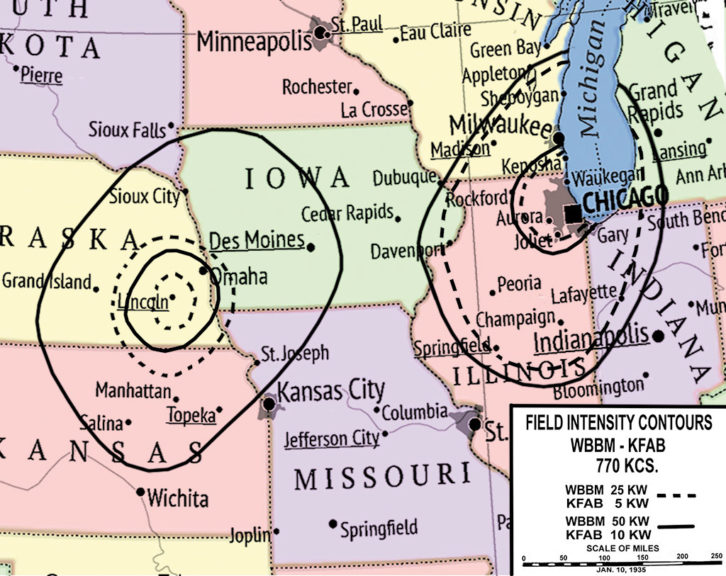
The combined nighttime coverage of these two stations was excellent, with almost no fading, and it continued in operation until KFAB changed frequencies in 1944.
Synchronization experiments were not limited to high-powered stations. In 1936, WLLH in Lowell, Mass., received permission to operate a booster nine miles away in the city of Lawrence. This was the first time synchronization was authorized on a local channel, using 250 watts in Lowell and 100 watts in Lawrence. WLLH’s special temporary authority became permanent when a license was issued for the booster in 1941, and it continued in operation until 2020.
EVOLVING ATTITUDES
The FCC’s attitude towards boosters began to change in 1939, apparently for political rather than technical reasons.
That year, during an FCC oversight hearing, Rep. William Connery of Massachusetts declared his opposition to booster stations. He felt they represented new stations in new communities, and claimed they diverted advertising from local newspapers while providing no local employment. He named several boosters operating in his own district.
After that, the FCC began opposing boosters that added coverage in a new community instead of filling holes in a station’s existing coverage. About a dozen applications were denied for this reason.
In 1941, necessity created an exception to this policy for WBT in Charlotte, N.C. When the NARBA Treaty frequency shifts caused KFAB to move onto its frequency, WBT was forced to operate with a nighttime directional antenna to protect KFAB. To mitigate its loss of coverage, the commission allowed WBT to build a 1,000-watt nighttime booster in Shelby, N.C.
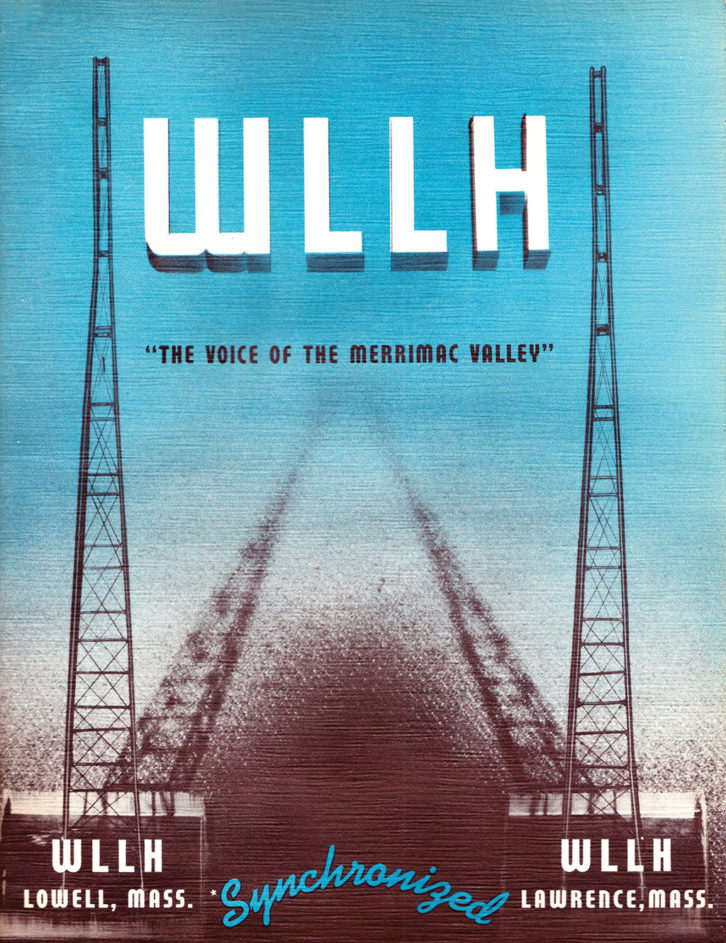
Author’s collection
During and after World War II, the FCC’s attitude towards boosters was inconsistent. Powel Crosley’s WSAI in Cincinnati was allowed to feed a 100-watt downtown booster from 1942 to 1945, but only during daytime hours. In 1944, a new booster was authorized to WRBL in Columbus, Ga., to cover Fort Benning. Then in 1944, the FCC approved two boosters in its own city of Washington. WWDC was allowed to install a 50-watt booster in Silver Spring, Md., and WINX was granted a 250-watt booster in Arlington, Va.
However, many other booster applications were rejected during this same time period.
By the 1950s, the FCC seemed to have set an internal goal of eliminating AM boosters, and it consistently pursued policies that resulted in the elimination of existing installations. This, plus the changing economics of AM radio in the face of competition from television, caused the shutdown of most of the boosters still in existence.
In 1954, the FCC ruled that Class IV (local) stations could not use boosters to extend their coverage areas because it was against the purpose of a local station license. WWDC’s booster renewal was set for hearing in 1954 and subsequently abandoned by the station. And when WINX proposed to move its booster to a new site, the application was denied “since commission rules do not provide for such operation.”
Yet another factor in the elimination of boosters was the FCC’s “7-7-7” rule, adopted in 1953. It prohibited any station group from owning more than seven AM, FM or TV stations in the country, and the commission was counting booster transmitters as one of the seven stations.
Thus, in 1953, CBS was forced to shut down its booster at WBT Charlotte to comply with the FCC’s ownership limits. And in 1962, when Westinghouse wanted to purchase WINS in New York, it was forced to close WBZA in Springfield, even though it had operated successfully for nearly 40 years.
REVITALIZATION BOOST?
The FCC’s Jekyll-and-Hyde attitude towards boosters hasn’t changed in more recent times.
In 1987, the FCC showed renewed interest in the technology, accepting comments under Docket 87-6. Several stations built and operated successful boosters at that time.
One of these was KKOB in Albuquerque, N.M., whose new 50 kW nighttime array placed a major null squarely over the state capitol in Santa Fe. As KKOB was the primary emergency station serving the capitol, the FCC allowed construction of a 230 watt nighttime-only booster in Santa Fe, which continues to operate to this day. Another was KLSQ in Laughlin, Nev., who operated a Las Vegas booster from 1986 to 1995.
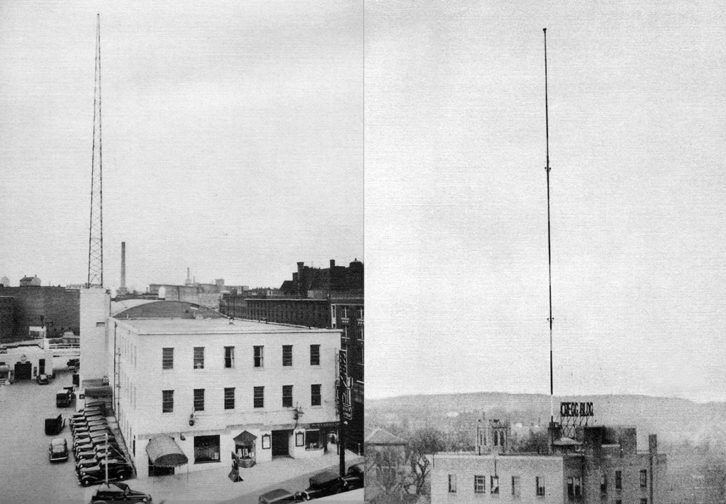
But in the end the FCC opted to continue its policy of authorizing boosters on a case-by-case experimental basis.
Beginning in about 2000, WISO in Ponce, Puerto Rico, was allowed to operate synchronized boosters in Aguaduilla and Mayaguez under experimental authority. But in 2011, the FCC denied WISO’s request for an additional booster station in Guayama, and in 2017 it abruptly cancelled all of WISO’s experimental permits, without a clearly-stated reason and despite letters of protest from government authorities in Puerto Rico.
In 2017 the FCC once again opened a rulemaking proceeding to consider permitting AM boosters, part of its AM Improvement initiative, under Docket RM 11779. As of this writing, the FCC again has failed to take further action. Will this be the time that the commission finally takes positive action on AM boosters, or will Lucy once again pull the football away from Charlie Brown in the final seconds?
John Schneider is a lifetime radio historian; author of two books and dozens of articles on the subject; and a Fellow of the California Historical Radio Society.
REFERENCES:
For more on this topic, readers may be interested in sources used in preparation of this article:
- Broadcasting Magazine:
- 1-15-32, “Synchronization status considered at hearing”
5-1-36, “WLLH Granted Right to Test Booster Station”
5-1-37, “WLLH Operating Booster Station”
5-1-39, “Sentiment for FCC Legislation”
1-1-41, “More Boosters are Granted”
2-15-44, “New Grants under FCC”
10-1-45, “Boosters for All AM Stations Possible”
1-7-46, “Seven League Boosts”
3-3-47, “FCC to Study Booster Pleas”
7-28-47, “WBT Extends Coverage With Booster Station”
5-17-48, “WINX Operates Two Boosters”
8-6-51, “WINX Transmitter Move Granted”
7-12-54, “FCC Rules Against Booster Bids”
5-7-62, “Westinghouse Buys WINS”
- 1-15-32, “Synchronization status considered at hearing”
- Wikipedia, WBZ History
- Federal Radio Commission Annual Report, 1930: “Synchronization of Broadcast Stations”
- “Popular Science Monthly,” April 1931, “Chain Broadcasts On One Wave” Proceedings, Institute of Radio Engineers, March 1936: “Present Practice in the Synchronous Operation of Broadcast Stations, as Exemplified by WBBM and KFAB,” by L. McC. Young, Columbia Broadcasting System
- Radio World, 1-14-2017, “Rackley on Synchronous AM Boosters”
- “A Wavelength for Every Network” by Michael J. Socolow, University of Maine, 2007
- Federal Communications Commission, MM Docket 87-6, 3-3-87, “Amendment of Part 73 to Authorize the Use of Multiple Synchronous Transmitters by AM Broadcast Stations”
- “KOB and Decades of Conflict,” by Mark Durenberger, 2017
